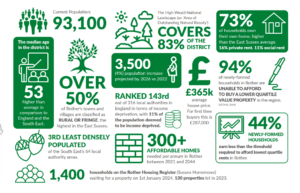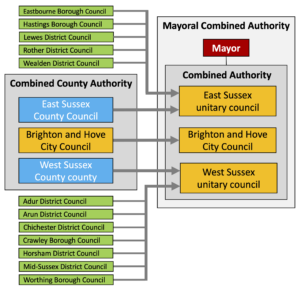You have until the end of the month to have your say on housing development locally after Rother District Council published its draft strategy.
According the council, the new plan sets out the council’s objectives and targets for housing development, and provides a framework that will guide the authority’s housing policy and decisions for the next five years.
Councillor Ruairi McCourt, portfolio holder for housing at Rother District Council, said: “Housing is at the heart of any community and the homes we live in shape our daily experiences, influence our physical and mental health, and determine our ability to thrive.”
You can read the draft strategy here.

The Rye Neighbourhood Plan was discussed by Rother District Council’s Cabinet on Monday, March 3. The updated plan, prepared by Rye Town Council, will now be submitted to an external examiner to decide whether it should be put to a local referendum in Rye again.
Plans for housing and retirement homes (as well as the new Aldi) off Winchelsea Road in Rye have been submitted, as have proposals for homes on the old school site off Ferry Road. Martello Developments is also proposing new homes at Tilling Green, Rock Channel, Freda Gardham School, and on the Harbour Road.

Meanwhile there’s just under a month to have your say on the changes planned for local government. There are two separate proposals – a county-wide mayor and a new unitary authority – both are likely to have an affect on housing development.
The new Sussex mayor would be responsible for transport, development and the police across both counties. Elections are expected in May next year. Sussex is one of a handful of areas being fast tracked for this new position under the government’s devolution agenda.
Consultation is also taking place about the local government structure, fifty years after Rye Borough Council was abolished and replaced by Rother District Council. East Sussex County Council and the local district authorities are proposing a new unitary authority based on the county boundary. The proposals were discussed at county hall in Lewes on Tuesday, March 11 – Rye News will have a full report next week. This year’s county council elections have been postponed.
A separate proposal for an authority covering the coast of Sussex from Brighton to Camber is also being explored by local politicians.
Click here for the consultation.
Image Credits: Chris Lawson , RDC , Russell Hall .




With reference to local government reorganisation and the proposed unitary authority, it is crucial to clarify that a single large Sussex authority, using the existing county boundary, is far from a foregone conclusion—despite being aggressively promoted by East Sussex County Council (ESCC).
The reality is that the large footprint of ESCC has failed to meet the needs of our coastal communities, particularly in Rye and Winchelsea, and there is no reason to believe this would change under a unitary authority structured in the same way. A one-size-fits-all approach risks further neglecting our coastal towns, which face distinct economic and social challenges that differ from those of inland communities.
Crucially, the often-quoted 500,000 population benchmark for a unitary authority is merely indicative. This was confirmed in Parliament by Angela Rayner in response to a question from our own MP, Helena Dollimore. Furthermore, Jim McMahon MP, Minister for Local Government, recently reiterated at the District Councils Network that viable unitary authorities could range from 350,000 to 750,000 in population—provided they reflect the demographics and needs of the area. This flexibility opens the door to more tailored solutions.
Would it not make far more sense for Rye to be part of a coastal-focused authority, encompassing Hastings and other East Sussex coastal communities? Such a structure could better address the unique economic and social challenges we face—such as coastal erosion, deprivation, and the need for housing that fits our local landscape—while ensuring a more coherent strategy for economic growth. Hastings alone has some of the highest deprivation levels in the South East, with nearly 40% of children living in poverty in some wards. The coastal economy, which relies heavily on tourism and potentially generating jobs in the green economy needs policies crafted with these industries in mind—not a broad-brush approach dictated by a distant, inland-dominated administration.
The question is simple: do we want a unitary authority that genuinely understands and prioritises the needs of our coastal communities, or one that continues to overlook them? A coastal-focused authority offers a far stronger and more sustainable future for Rye, Winchelsea, and the majority of the East Sussex coastline.